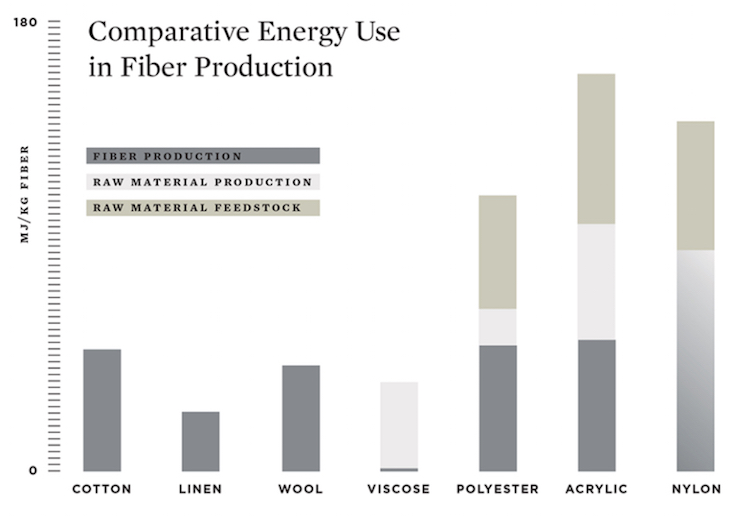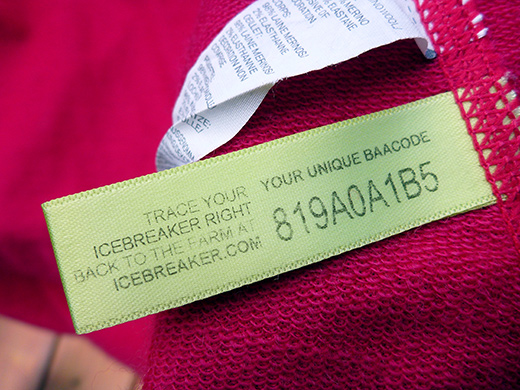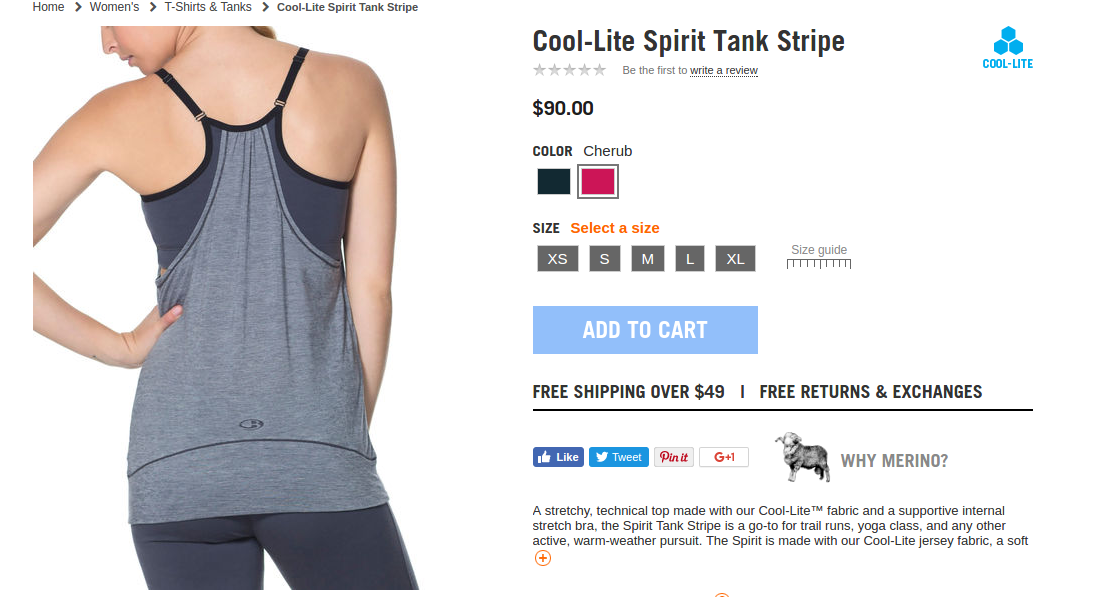Hello UrbanMeister! In our special series on sustainable outdoor running, we told you with our first article how outdoor running seems low-impact but even your pair of sneakers can have a huge impact on the environment – read here more on sustainable sneakers.
Today in our second post we want to focus on sustainable sportswear to ensure that the outdoor surroundings we love running in remain pristine & pure. We go behind-the-scenes to see where our fashionable sports apparel goes wrong (there is a lot pollution going on…) and how we can make more meaningful, smarter, eco choices. Yes! As always, UrbanMeisters is about solutions, no pollution, so you will get the favorite ethical sportswear picks of the team.
Let’s warm up!
Sportswear tends to be equal parts function & fashion. In the past few years, with the rise of athleisure, sports chic street style trends, sportswear has gained popularity as mainstream wear. Owing to this, besides dedicated sports brands, even the Luxury labels like Ermenegildo Zegna, Brioni and high-street giants like Zara, Forever 21 have all started including fitness wear offerings for both men & women.
But like we explained in our various articles on sustainable fashion, the problem with sportswear is exactly the same… though different.
The fashion industry is one of the most polluting industry and is not very cool and reasonable neither with natural nor with human resources. On top the supply chain can be dispatched in different countries around the world which makes it difficult for the companies and consumers to understand what is really going on. From raw materials, sourcing, manufacturing, retailing to discarding, every step in the chain has some negative eco impacts.
Sportswear is textile too at the end of the day. To understand this let us first explain to you that textiles are of the following kinds:
- Natural – Plant based (Cotton, linen, hemp, jute or ramie) or animal based (wool, alpaca, cashmere, leather, down feathers etc)
- Chemical – Synthetic (polyester, nylon, acrylic, pvc) or semi-synthetic (rayon, viscose, modal lyocell & bamboo)
Now if you dig through your fitness clothing, you will find that it’s largely made of polysters, nylons, spandex etc. While natural fibers come from renewable resources, chemical fibers, like polyester and nylon, are made from crude oil. Semi-synthetic fibers, like rayon or modal, are produced by a chemical process, but use a natural raw material source like wood chips from trees (and therefore often marketed as eco-friendly). Example: Bamboo – highly sustainable but produced using heavy chemicals 1 that can get deposited untreated into local water systems. 2 Another tricky example is cotton, discover here why you should totally go for Organic cotton.

Source
Coming back to polyester – A huge amount of oil are used each year to make the world’s polyester fiber (used in almost all apparels) & takes more than 200 years to decompose. To understand this better, polyester is a synthetic plastic fiber made from petroleum. Because it’s a polymer it has properties that make it very well-suited for performance wear – it’s strong, lasts a very long time, can be shaped into many different material feels (from hard to soft like silk), is resilient, offers insulation, resists wear & tear, is sweat-wicking and much more.
The most commonly used polyester type in our clothing is – wait for it!! – PET. If PET sounds familiar, that is because it’s the same material used to make plastic bottles (read our post on PET safety). And here’s another surprise – in reality, 60% of the world’s PET is used to make our clothes, while 30% is used to make plastic bottles!! (Source)
The other problem with fabrics like polyester is with its use & disposal. When washing a polyester garment, it releases 1,900 individual plastic microfibers per wash (Source). This sets off the chain-reaction of polluting waterways. Then again, because it’s a synthetic plastic fiber, it takes years to degrade and releases toxic chemicals into air & soil.
Besides fabric, the problem lies with other stages too. Dyeing for example. Effluent from dye houses – unabsorbed dyes, chemicals and heavy salts that are used during the dyeing process, is polluting the waterways of countries like India & China, where most of the dyeing is done. In Indonesia, Citraum river is most polluted as it’s lined with textile manufacturing plants. When Greenpeace tested the discharge from one of these textile plants along the Citarum, it found alarming amounts of nonylphenol, an endocrine disruptor, deadly to aquatic life. Nonylphenol chemical remains in our clothes after production and only comes out after a few washes. For this reason, the European Union (EU) member states banned imports of clothing and textiles containing nonylphenol ethoxylates but US still hasn’t banned it.
Besides this, dyeing requires huge amounts of water. Typically textile dyeing requires approximately 100 – 150 liters of water to process 1 kg of textiles, according to Nike. In addition, this consider the huge impact of energy consumption by huge format retail stores of these fitness brands. When you put together all these considerations, you will realise how the bright compression tights have a dark side too. So what’s the good news if any?
The Adrenaline rises
While new fitness brands are cropping up with green agenda as their USP, we first of course question what the big omnipresent brands are doing. With a huge global presence Nike, Adidas & Puma have an unquestionable responsibility to go green. And they happen to be our first go-to brands too. Greenpeace back in 2011 had given a green #detoxchallenge to these brands. Since then all three brands in different ways have taken steps to improve their green score – from using recycled fabrics, to moving towards waterless dyes, and focusing on energy consumption during manufacturing & retailing, these brands are making an effort to reduce their negative eco impact.
Adidas published a clear detox roadmap outlining sustainability action plan to go green by 2020. It committed to publishing complete discharge data from 80% of it Chinese & global suppliers by 2016. It started with water-less dyeing, to end the use of water and process chemicals. Nike too moved to the process, termed as ColorDry, reducing dyeing time by 40 percent, energy use by about 60 percent and the required factory footprint by 25 percent compared to traditional methods, as per the company. In 2014, Adidas introduced NoDye (materials used in their natural color state) products in its Outdoor, Originals, Running and Training segments.

Now while we discovered the polyester can be quite a villain, it also has a bright side. Because it’s PET, waste PET can be recycled to make polyester for fabrics and companies are using recycled polyester. The new rage – Under Armour’s green technology – uses plastic bottles to make fabric. Their Catalyst line of UA Green products helps them keep an estimated 2,000,000 plastic bottles out of the landfills, since each Catalyst item makes use of up to four plastic bottles. And it’s every bit high performance – from the Moisture Transport System that takes sweat away from the body, to the Anti-Odor technology that prohibits microbe growth, to sun protection of 30+ to 50+ for the t-shirts. And all this while being supremely lightweight. Similarly Adidas & Nike have both moved to using recycled Polyester too for their fabrics.
In apparel, Adidas produced a full running line featuring t-shirts, tanks, tights, skirts and shorts with 95% pattern efficiency (only 5% waste). Finally, for spring/summer 2014, the Adidas by Stella McCartney range also included a low-waste t-shirt, sweatshirt and knit-shorts. Watch the video below to understand how low-waste pattern efficiency is achieved.

So while all these companies are trying to turn a new green leaf, which is the green brand that has won our eco-conscious hearts?
Our top 4 sustainable sportswear picks
IceBreaker
Calling themselves a nature-centered business: Icebreaker says it’s all about our relationship with nature & each other. Born in 1994, their USP has been using Merino wool to make technical clothing. They are credited with bringing back wool in a world rife with synthetic fibers. And because Merino is a sustainable fabric you can literally bury your Icebreaker in your garden and it will compost!
Icebreaker is dedicated to ethical manufacturing and animal welfare. They have the super-innovative, transparent and traceable supply chain system – BAACODE. It allows people to see where their garments are born, to meet some of the farmers and to see our manufacturing.

ABOUT THEIR RUNNING APPAREL: While you may wonder about how practical is wool and our typical picture of wool clothing is bulky, Icebreaker breaks those notions. Wool is naturally suited to performance clothing being breathable, odor-resistant and sweat-wicking & quick drying. Icebreaker took this traditional material and made it super-light and thin. They have a whole range of options from base layers, mid-layers to outer-layers. It was their range of base-layers that won them popularity. and can be worn as the first base layer next to the skin.
BUY HERE: Their running range for women includes everything from sports bra, running shorts, socks, cropped tights to full length tights, tees, tanks, hoodies in stylish solids and modern prints. Men’s running range to is a very exhaustive one with countless options. They have also introduced the Cool-Lite range (Merino & Tencel blend) for hot climates. They also have MerinoLOFT range of vests & jackets both for men & women which is made from recycled polyester for weightless warmth.
Patagonia
Patagonia is the poster child of corporate environmentalism. Started in 1973, and still a family owned business, Patagonia is one brand where we don’t know where to start. While all companies have good press & bad press, this is one company that really rings true. When it was challenged in 2012 by Greenpeace for have PFCs in its water-repellent gear along with other sports labels, Patagonia was quick to respond and act. In April 2015, Patagonia’s venture capital unit invested $1m in a Swiss start-up that is developing new waterproofing techniques based on natural materials that could one day replace petrochemical-based finishes.
Their list of nature & human focused initiatives & activism is endless. They co-founded the Conservation Alliance and Conservacion Patagonica & donate millions each year to grassroots environmental groups. But here’s a gem – their environmental internship program that allows Patagonia’s employees to leave work (with pay!) for up to two months so they can support an environmental group of their choice. Phew! Just that made us sweat! Material innovation – From recycled plastic, rubber, undyed cashmere, yulex, reclaimed wood, ethical merino, the list is endless.
ABOUT THEIR RUNNING RANGE: Focused largely on trail running, their gear can be used for all your regular outdoor running. The fabrics used in the apparel is FairTrade & Bluesign certified and each product clearly mentions the fabric composition & the supplier list. Example – this women’s running short (made from 50% recycled polyester) also has supplier list that you can view. You can even read about their trail running ambassadors.
NOTE: Patagonia is dedicated to eliminating unnecessary consumption. It believes that « the greenest product is that which already exists ». With regard to this, they have initiatives like Worn Wear & Common Threads that encourage you to reduce purchases. If your Patagonia gear is damaged, worn out or you are done with it, bring it back their stores & get credits in exchange.

BUY HERE: To get an overview on, Patagonia’s approach to running, they have a dedicated information page, where you can learn about their core pieces like the Houdini jacket, Pro-rider shorts etc. You can also contribute to upkeep of outdoor running locations. They have dedicated web-sections for for men & women running gear. Colourful, stylish and eco-honest.
Threads 4 Thought
While the big companies are taking green initiatives and we have already given you a brief low-down on their efforts, for our favorite picks, we chose to go with smaller, lesser known brands which are found on the principal of sustainable sportswear. Since they don’t have huge marketing budgets to advertise their green efforts, we wanted to use UrbanMeisters to turn the spotlight on them. These are brands popular & suggested to us by our green readers.
Threads 4 Thought is a B-corporation certified casual & active-wear brand, TFT was started in 2007 with the mission of bringing forth a sustainable fashion brand. Their manufacturing is designed to be sustainable with non-toxic dyes and water being reused at their facility in China. Their materials are all sustainable from organic cotton, recycled polyester to LenzigModal (the most ethically & sustainably produced modal).
ABOUT THEIR ACTIVEWEAR APPAREL: With active-wear options only for women, their range is as good for yoga as it is for running. For women, they have everything from light to full support sports bras, tanks, tees and tights. Beautiful on-trend designs include ethnic-patterned sportswear to modern minimal sport-chic designs.

Women’s Activewear by Threads 4 Thought
Natural Peak
The French label has a small range as far as styles and colours are concerned, but its strengh is that they offer technical, comfortable and eco-friendly clothing. Natural Peak offers clothes made of beech and eucalyptus wood fiber. WoodWear® technology, derived from a new material called ProModal, is the combining of two unique materials: Lenzing Modal, produced from rebuilt beech wood cellulose, and Tencel, from eucalyptus wood cellulose. The wood from which the material comes are renewable forests maintained without pesticides.
ABOUT THE RANGE: With super-soft, flexible, sun-protecting, moisture-wicking, and many other features, this is a great option for both men and women. Basic modern designs which are great option for both men & women. They offer base layers, leggings, t-shirts & accessories.

In the end, runners, we urge you to go slow when it comes to your fitness wardrobe, pick and support brands, products which are ethical and sustainable and reduce your own carbon footprint as you run those miles.
We must tell you how while researching for brands team UrbanMeisters broke out into serious debates and arguments because for each good brand a team member would discover, there was some counter-argument presented about the brand too. So we were confused about which brands to pick. In the end we learned that every corporate, brand must take steps to green up their act and we should press them in the green direction through our choices & voices.
If you have more brand suggestions, counter view-points or would like to contribute on this topic in any way, you are most welcome to do so. Just write in to us below.





![[ALERTE GREENWASHING – CHAMBRE ENFANT] Les conseils pratiques d’un père engagé](http://urbanmeisters.com/wp-content/uploads/bfi_thumb/dummy-transparent-pyhloyclal4p5ty8tb4matytlyd4xyugzcd2z17fr6.png)